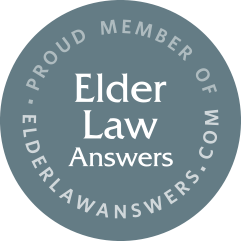 Creating an estate plan involves selecting people to receive your money, property, or other items if you pass away.
Creating an estate plan involves selecting people to receive your money, property, or other items if you pass away.
When making a will, you’ll work with an estate planner to designate those who will inherit from you. The persons (or entities, such as a charity) you choose are the beneficiaries of your will. In most cases, you’ll choose multiple beneficiaries, such as when you set up a more complex estate planning tool, like a trust.
In addition to executing a will, you may select beneficiaries for other types of assets you own. You may have an insurance policy or retirement account, investment account, or another pay-on-death (POD) account. You’ll typically want to select loved ones to receive the funds from these kinds of accounts upon your death. For instance, purchasing a life insurance policy involves choosing someone who will receive death benefits if you die.
These decisions inform your overall estate plan. Whether in the context of a will, trust, POD account, or life insurance policy, the people you pick to receive your assets are known as beneficiaries. They receive the “benefit” of your assets.
Primary vs. Contingent Beneficiary
A contingent beneficiary is a type of beneficiary. If the first, or primary, beneficiary passes away, cannot be found, or does not want the asset, the contingent beneficiary may be next in line to receive it. Your contingent beneficiary is typically your second choice. Think of a contingent beneficiary as a backup beneficiary.
Imagine an individual who is married and has a child. This person might make their spouse their primary beneficiary and select their child as their contingent beneficiary. This ensures that the child would get the assets if both parents died.
Selecting contingent beneficiaries creates a more robust estate plan. You likely have wishes about who would get your money and assets should you pass on. Having second-choice beneficiaries protects your autonomy, ensuring the distribution of your assets reflects your wishes.
Multiple Beneficiaries
In some cases, you may indicate two or more primary beneficiaries. For instance, you may divide your estate between several beneficiaries in your will.
A single parent could make both their minor children primary beneficiaries in their will, dividing the estate by 50 percent.
Having multiple primary beneficiaries differs from having a primary and a contingent beneficiary. The primary beneficiary has the first opportunity to receive the assets. Only if the primary beneficiary does not take the assets can the contingent beneficiary assume ownership. With multiple primary beneficiaries, the asset is divided between the individuals.
Just as it is possible to have more than one primary beneficiary, it is possible to have multiple contingent beneficiaries. A person with a spouse and two children might make their spouse their primary beneficiary and both the children their contingent beneficiaries.
Beneficiaries and Heirs-at-law
A beneficiary is distinct from an heir-at-law. While a beneficiary is someone you choose, an heir-at-law is someone who may have the right to inherit from your estate if you do not have a will or an estate plan.
Many people today do not have an estate plan. According to one 2024 Wills and Estate Planning Survey, about two-thirds of Americans do not have a will.
If you pass away without having executed a will, you would die “intestate.” States have different rules governing intestacy. These laws determine which family members may be entitled to your estate if you did not select beneficiaries during your lifetime. Often, this is your spouse and children or parents and siblings.
Stipulating primary and contingency beneficiaries gives you autonomy. You decide who receives your assets rather than letting your state statute dictate the outcome. By selecting loved ones as beneficiaries, you also can help protect their financial futures if you are no longer there to provide financial support.
Speak to an Estate Planning Attorney
An estate planning attorney can assist you in designating your first-choice and secondary beneficiaries. They also can partner with you on creating a comprehensive estate plan. This may include executing advance directives, identifying strategies to help your heirs avoid the probate process, and more.
Keep in mind, of course, that your life circumstances are likely to change over time. You may welcome new grandchildren, or you may have a dispute with a beneficiary and wish to remove them from your estate plan. This is why it’s essential to revisit your estate plan – and update your beneficiaries – on a periodic basis.
Find a local, qualified estate planning attorney for further guidance.
For additional reading on designated beneficiaries, refer to the following articles:
- What Happens When a Beneficiary Designation Differs From What Is in the Will?
- What Are the Drawbacks of Naming Beneficiaries?
- Choosing Retirement Account Beneficiaries Requires Some Thought
- Payable-on-Death (POD) Accounts Can Protect Your Money for Your Loved Ones
